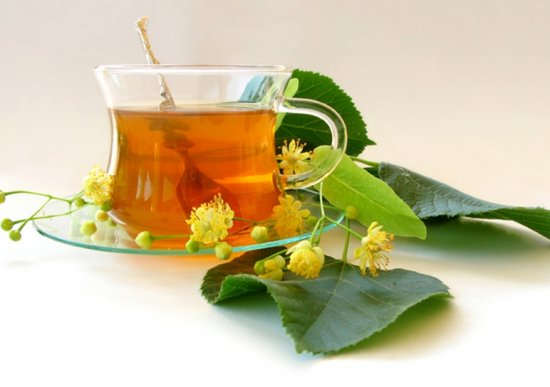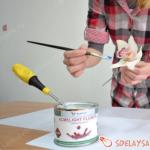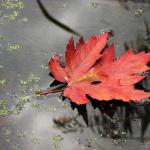How to dry the leaves?
Dried leaves are sometimes an irreplaceable component of a craft or a memory in the form of a herbarium. Various sam0delka.ru are made of them, and they can also be used in the interior. Some of them can be used to flavor tea. There are several ways to dry the leaves.
Dry leaves for crafts
1. If you need voluminous leaves, for example, for a bouquet, they need to be laid out in the sun one by one or connected in bunches. In this case, the edges of the leaves may curl slightly. If you want to achieve a rich color, then you should avoid direct sunlight. To speed up the process, you can use warm air from a hair dryer.
2. Leaves, previously covered with paper towels, are placed between the sheets of the book. Wet leaves should first be removed from moisture by blotting with a towel. It is important that there should be a distance of at least three mm between the leaves, otherwise the weight will be insufficient. The dried plant book should be checked every week.
3. There is a special device - a flower press. The leaves placed in it, thanks to the free passage of air, dry quickly. You can either buy it or make it yourself. The leaves are separated with paper towels and placed under a press. As the towels get wet, they need to be changed.
4. Large leaves dry well in the microwave. For this, a cup of water is placed in it and the sheet itself, wrapped in paper towels, on a plate. You need to dry for 10 seconds, each time checking the condition of the plant.
5. The brightness of fresh leaves can be preserved by ironing them. Each sheet is wrapped in waxed paper and covered with a towel on top. The iron is ironed on each side for about two minutes.
6. A solution of water and glycerin will help maintain the texture of the leaves, but give them a brown color. The leaf is placed in this solution for several days. After holding it for a couple of weeks, the sheet will remain forever.

Tea leaves
1. Fresh herbs must be thoroughly washed and dried on a towel.
2. Microwave dry suitable for instant results. The leaves are placed between paper towels and dried for 30 seconds. This method will not work with juicy greens.
3. Plants with hard leaves should be dried well. Hanging in small beams in a dark room. All moisture from them will have time to evaporate. It is better to place small greens in a paper bag with a prepared hole before drying.
4. Fleshy leaves must be dried quickly, as they tend to grow moldy. To do this, in the microwave, paper towels and leaves are sequentially placed in several layers. Plants should not touch each other.
5. Dried leaves keep well in airtight containers. They can be crushed beforehand. They are great as a seasoning or addition to tea.

Leaf skeleton
1. It is necessary to choose leaves with pronounced veins.
2. Pour water into a saucepan. For safety, you must use gloves, and at the end rinse all tools with running water.
3. The food salt added to the water will gradually soften the leaf, leaving a streaked stem. It can be replaced with soda ash. It takes 30 grams.
4. Leaves are placed in the prepared solution.
5. You can simmer the leaves over low heat, or first bring to a boil, and then reduce the temperature.
6. Leaves should be cooked over low heat until they completely disintegrate. As the water evaporates, it needs to be added.
7. Finished leaves are carefully placed in a container with cold water. They should not touch each other.
8. The pulp is carefully removed from the sheet with a stiff brush. If necessary, it can be rinsed with running water.
9. All utensils must be washed well with soapy water.
10. The resulting skeleton of the leaf can be dried in any available way (spread out on paper towels, between the pages of books or under a press).

Dried leaves are easy to use. And using simple techniques will turn a boring activity into a fun pastime.




